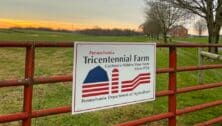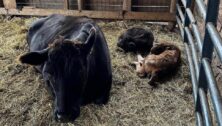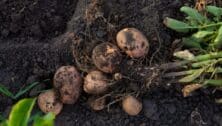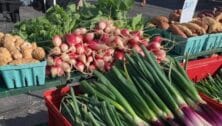Chester County Ag Notes: The Importance of Bee-ing
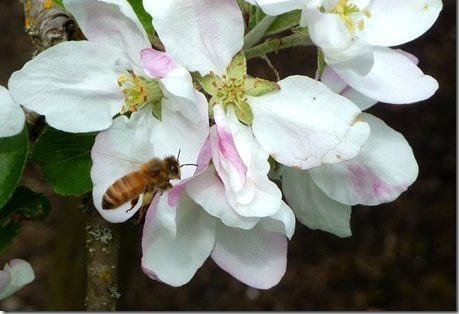
We think of bees mostly in relation to honey but honey bees play a critical role in the pollination of many of our favorite fruit, vegetables and nut crops. In fact they contribute $14-16 billion to the value of US crop production and an estimated one third of all the food we eat is directly or indirectly derived from the pollination performed by honey bees.
The bees we see visiting flowers spend all day visiting flowers collecting nectar to take back to the hive. In the process pollen adheres to their hairy bodies so that when they visit the next flower it is transferred to the stigma. Some plants are self-pollinated so that seed can be set from pollen produced in the anthers of the same plant as the stigma.
However many of our important fruit and vegetable crops require that pollen come from another related plant to achieve fertilization.
There are around 3,500 native bee species and most of them live in the ground and not in colonies or groups. The honey bee (Apis mellifera) was brought over by the early settlers in 1622 so that they could still enjoy the pleasures of honey in their new homes. They live in colonies or hives and have incredibly organized lives within a rigid social system.

Until the late 17th century the “big bee” of the colony was known as the king bee until a Dutch scientist found ovaries capable of producing 2,000 to 3,000 eggs per day. The single queen bee in each hive is fertilized by males or drones whose only purpose in life is to fertilize the queen if they are lucky – or not since they die afterwards! The real work of the hive is carried out by thousands of worker bees, 60,000-80,000 at peak in the summer.
This is where bees fit almost miraculously in to our story as they communicate to other bees at the hive where there is a plentiful supply of nectar/honey. Let’s use apple flowers as an example. Blossoming occurs over several days and varies from variety to variety so that the fruit grower has to plant groups of varieties that blossom at the same time.
The specific dance carried out by the bees outside the hive tells the observing bees where some really good nectar can be found both in terms of directions and distance. While the nectar is flowing the bees will make many trips a day and like to optimize each flight by knowing where to go for best results.
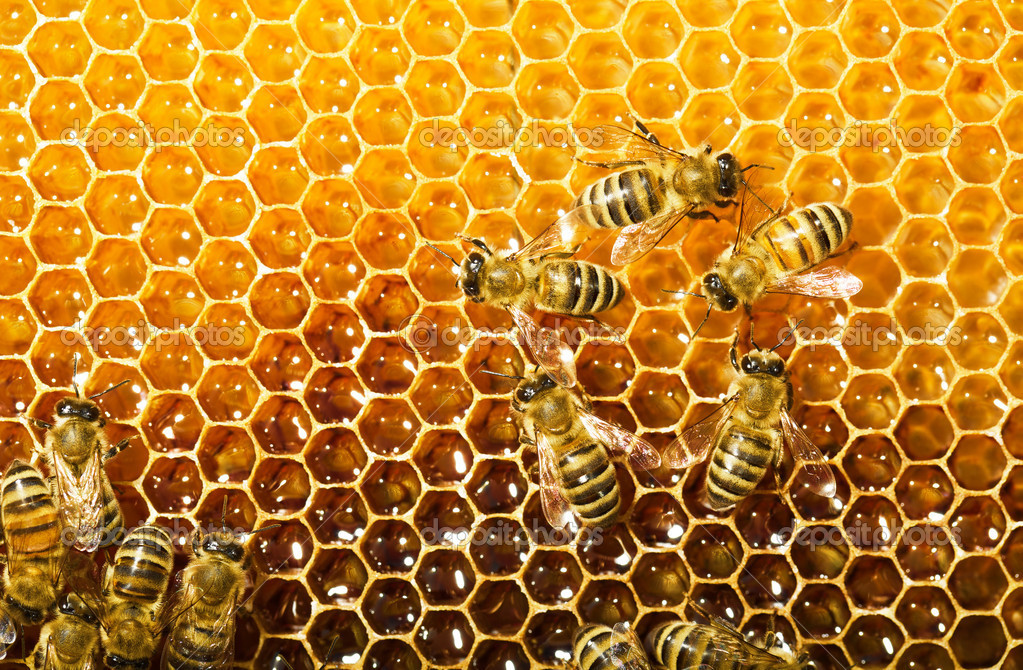
Meanwhile pollen will be collected and deposited on stigmas as the bees quickly check each flower for nectar. Bees fly up to 5-6 miles from the hive and likely fly many hundreds of miles during their lifetimes. Pollination is important for many crops such as almonds (100% at blossoming), blueberries and cherries (90% dependent), avocadoes, alfalfa, melons, oranges, cranberries, squash and many more.
Without the vigorous activity of bees, insufficient flowers are fertilized to produce good crops. Many fruit farmers have hives of their own which are carefully positioned in their orchards. There are also many beekeepers who rent out their hives for use in orchards and fields. Bees are one of many insects that feed on nectar and collect pollen and so hugely influence cropping potential. Commercial food, livestock feed and fiber crops are not the only plants that need pollinating.
Overall pollinator populations are declining in our natural environment so we can all play a role in maintaining these critical pollinator plants by planting native plants which are attractive to pollinating insects. Our natural environment is diminishing as more land is used for housing, roads and commercial development. “Pollinators are small but mighty creatures who need our help as much as we need theirs, and that is why USDA is dedicating resources from all corners of our department to boost their habitat and better understand how to protect them,” says USDA Secretary of Agriculture Tom Vilsack.
A good listing of native pollinator plants that we can plant to attract and support pollinators can be found here. Honey will be the subject of another article later in the summer. Local interest in honey and bees is strong and there are around 200 members of the Chester County Beekeepers Association whose members share a common interest in honeybees and beekeeping. I will also include a listing of the many local farms where honey is produced and available for sale.
Connect With Your Community
Subscribe to stay informed!
"*" indicates required fields































![95000-1023_ACJ_BannerAd[1]](https://vista.today/wp-content/uploads/2023/03/95000-1023_ACJ_BannerAd1.jpg)













